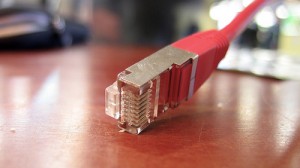If you want your home business to become more profitable, it may be time to re-evaluate the current state of connectivity in your home office. If you are an entrepreneur or freelancer, or working out of your home in some online capacity, fast and reliable connectivity is likely one of the most important aspects of your business. This may also depend on where you’ve set up your office. For instance, you might have a garden office with shed, in which case, you might have to make sure that you have a steady internet connection.
According to Akamai’s “State of the Internet Report for 2013,” the global average speed connection is 3.1 Mbps, with a peak connection of 18.4 Mbps. Do you measure up? Since you may not have the expertise of a full-scale Information Technology (IT) team standing by, it may be helpful to first, learn how to speed up your internet connection by yourself; and in case that doesn’t help, it would do you good to learn more about the viable Internet broadband connectivity options available today.
Broadband Options
By now, most individuals and businesses are using broadband technology for speed in downloading and uploading data to and from the Internet. In the past, we relied on dial-up services that required a modem and a telephone line. There are four viable broadband options to consider for Internet connectivity:
ADSL and SDSL Internet
ADSL Internet and SDSL Internet are subsets of DSL (Digital Subscriber Line) Internet, which is often used in homes and home offices. ADSL (Asymmetric Digital Subscriber Line) is preferred for professionals who download excessive data from the Internet and upload less frequently, while SDSL (Symmetric Digital Subscriber Line) provides equal amounts of bandwidth for both downloads and uploads. Services run about $35-$50 per month.
Both ADSL Internet and SDSL Internet include the basic features of DSL: high-speed Internet service, data and voice/audio support, easy and quick installation, and availability and performance measured by distance. ADSL download rate is 1.5-15 Mbps with an upload rate of 128 kbps to 1 Mbps. SDSL data rate is up to 3 Mbps.
Cable Internet
Cable Internet uses a modem and cables to provide users with download rates of 25-100 Mbps and upload rates of 2-8 Mbps. With data cabling from Voicecom or similar companies, customers can share bandwidth with their neighboring users. This may affect download speeds if there is high usage for online streaming and downloading. Services run about $25-$90 per month.
Cable Internet offers features similar to its competitors: high-speed Internet service, solid performance for streaming and downloading, easy and quick installation, and high availability in most areas (especially urban.)
Wireless Cell Phone Internet
For traveling entrepreneurs or rural residents, Wireless Cell Phone Internet may be a viable option. With download rates at 0.4-50 mbps, and upload rates of 0.2-6 mbps, speed is a plus, but file sharing and multi-household computing is not at its best. If you are on the road, it may be an ideal solution. Download speeds are amazing and are expected to improve within the next few years. Services run about $30-$100 per month
Satellite Internet
Satellite Internet will cost more, is slower, and is less reliable, but it is a good solution for remote areas where cell phone coverage is unavailable. It is also prohibitive for email collaboration and file sharing, unless a modem is available. Download rates are 0.5-1 mbps with slower upload rates. Services run about $100-$250 per month, and a satellite dish can cost $300-$1,000.
Internet Connectivity Checklist
The increasing number of home-based businesses is not surprising. According to Business For Home, a new home-based business is started every 12 seconds, for a total of 38 billion in America today. As you get back to work, take a survey of your home-based computer environment, and consider the following:
- Ensure you have broadband, and identify your current rate of speed to determine if it is adequate. The National Telecommunications & Information Administration in June 2013 reports household broadband rising to 72.4 percent, or 88 million households.
- Make sure that you are looking for the best broadband prices such as earthlink internet prices and other internet provider costs.
- Review the number of household or remote devices dependent on your service.
- Consider what you are using: streaming, downloading, uploading, filesharing, and more.
- Are you productive? Is your connectivity fast enough to accommodate your business needs?
- Check your equipment, and ensure it is up to date.
SDSL Internet may be a solution to your business needs. and one that will improve your business productivity and affect your bottom line.
Creative Commons image by Xjs-Khaos


